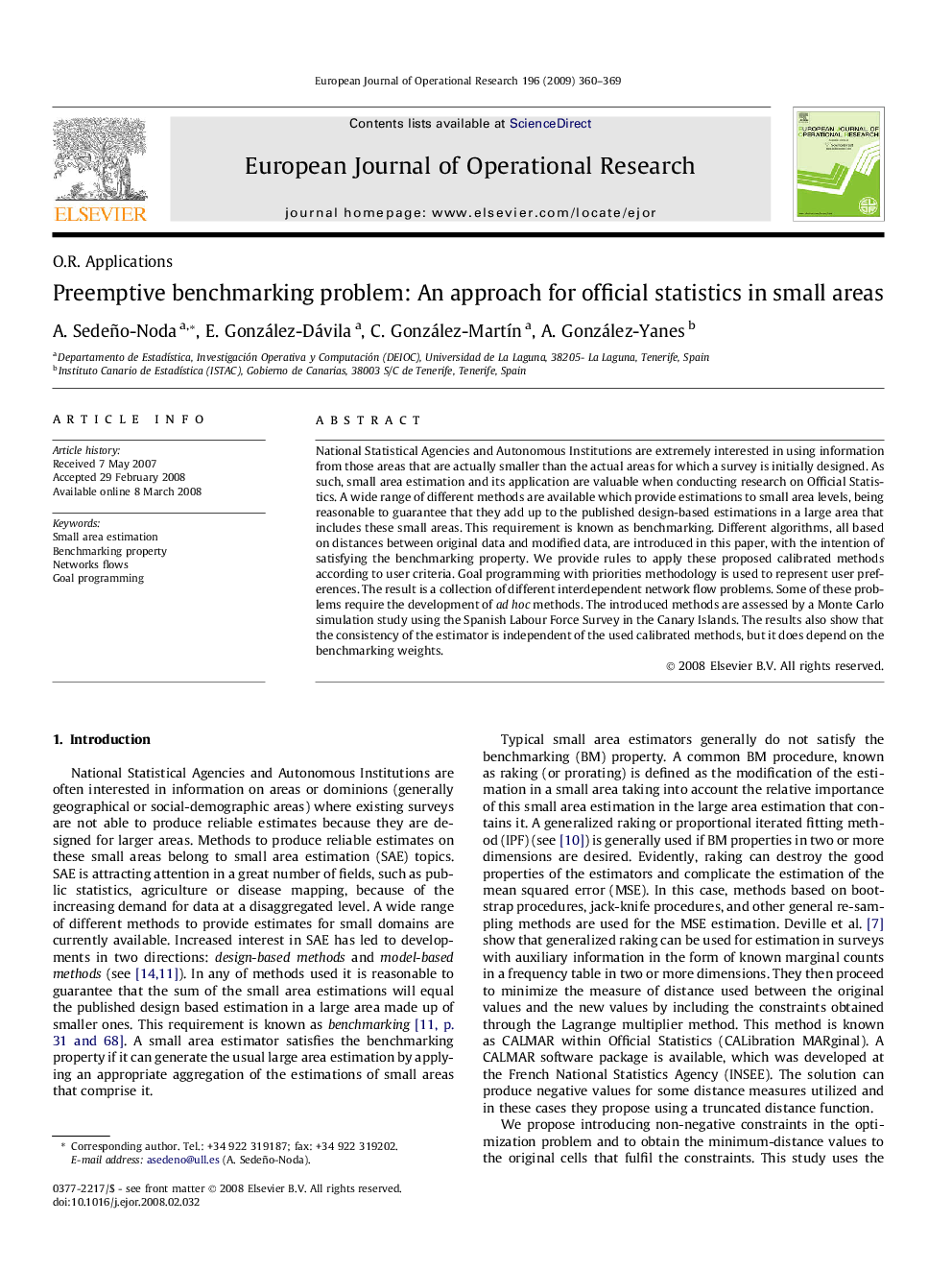| Article ID | Journal | Published Year | Pages | File Type |
|---|---|---|---|---|
| 477315 | European Journal of Operational Research | 2009 | 10 Pages |
National Statistical Agencies and Autonomous Institutions are extremely interested in using information from those areas that are actually smaller than the actual areas for which a survey is initially designed. As such, small area estimation and its application are valuable when conducting research on Official Statistics. A wide range of different methods are available which provide estimations to small area levels, being reasonable to guarantee that they add up to the published design-based estimations in a large area that includes these small areas. This requirement is known as benchmarking. Different algorithms, all based on distances between original data and modified data, are introduced in this paper, with the intention of satisfying the benchmarking property. We provide rules to apply these proposed calibrated methods according to user criteria. Goal programming with priorities methodology is used to represent user preferences. The result is a collection of different interdependent network flow problems. Some of these problems require the development of ad hoc methods. The introduced methods are assessed by a Monte Carlo simulation study using the Spanish Labour Force Survey in the Canary Islands. The results also show that the consistency of the estimator is independent of the used calibrated methods, but it does depend on the benchmarking weights.
